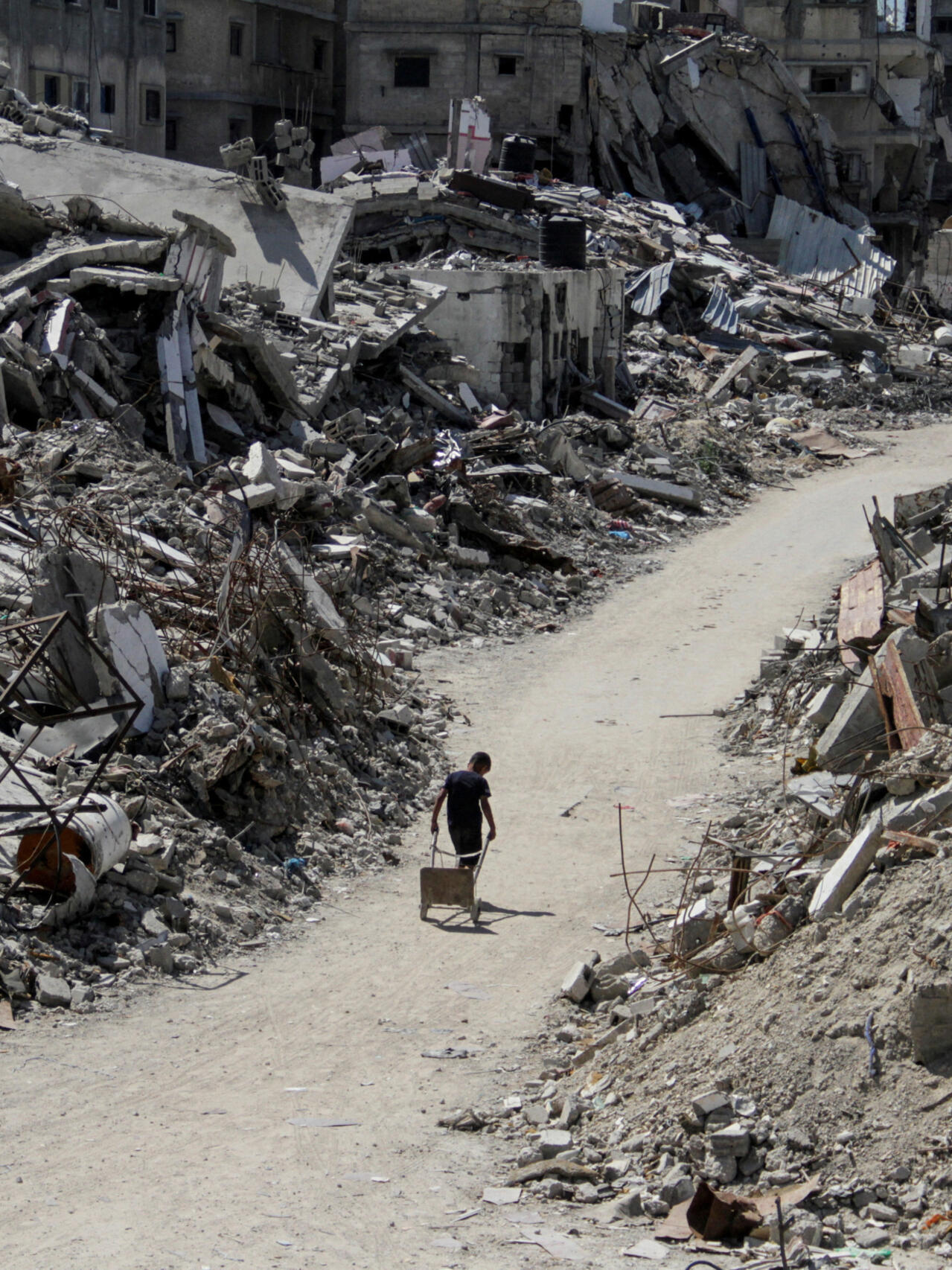
Report on EPA’s New PM2.5 Air Pollution Standards

Introduction
In a major win for public health, the Environmental Protection Agency (EPA) has finalized new, tighter standards on PM2.5 air pollution, also known as soot. However, this life-saving action is now being challenged by industrial associations, including the American Petroleum Institute, and 25 states. Earthjustice is intervening on behalf of community organizations to defend the EPA’s new stronger air standards in court.
Importance of PM2.5 Air Pollution Standards
Particulate matter pollution (PM2.5) is a type of air pollution that can penetrate deep into our lungs and hearts, contributing to countless chronic illnesses. In early 2023, the EPA proposed new PM2.5 standards, which health and environmental advocates argued were not strong enough. After hearing from the public, including 32,000 Earthjustice supporters, the EPA delivered stronger air quality protections in February 2024. This type of pollution kills nearly 50,000 people in the United States every year, and the EPA’s new standards are expected to reduce air pollution and save thousands of lives.
What is PM2.5, and why is it so dangerous?
- PM2.5, also known as soot, is small particulate matter measuring 2.5 micrometers or less – a size small enough to penetrate deep into your lungs and heart. It inflames the airways, gets into the bloodstream, and impairs the body’s immune responses.
- This type of pollution causes asthma attacks, hospitalizations, and emergency room visits for cardiopulmonary diseases. It is also linked to cancer.
- Soot pollution disproportionately affects people of color — particularly Black and brown people — due to where they live and work.
Importance of Strong Standards
- Particulate matter pollution comes from fossil fuel combustion for electricity generation, manufacturing, transportation, and agriculture.
- Strengthening the PM2.5 national standards will force these polluting sources to reduce their harmful emissions, resulting in saved lives, better public health, and clearer skies.
- Earthjustice ensures that if a region’s current air quality is worse than a new, tightened standard, the state government must implement plans to curb air pollution so that the air quality will meet the updated standard. If they fail to do so, Earthjustice takes legal action.
Fighting Back Against Polluters
- Right away, major trade associations, including the National Association of Manufacturers and the American Petroleum Institute, and 25 states led by Kentucky, West Virginia, and Texas challenged the improved air quality standards in court.
- Earthjustice is representing health, environmental, and community organizations in defending public health and justice in court.
- With robust scientific backing, Earthjustice aims to demonstrate how the Clean Air Act saves lives and protects communities.
- Advocacy is needed for the swift implementation of the strengthened standards.
SDGs, Targets, and Indicators
| SDGs | Targets | Indicators |
|---|---|---|
| SDG 3: Good Health and Well-being | Target 3.9: By 2030, substantially reduce the number of deaths and illnesses from hazardous chemicals and air, water, and soil pollution and contamination. | Indicator not mentioned in the article. |
| SDG 11: Sustainable Cities and Communities | Target 11.6: By 2030, reduce the adverse per capita environmental impact of cities, including by paying special attention to air quality and municipal and other waste management. | Indicator not mentioned in the article. |
| SDG 13: Climate Action | Target 13.2: Integrate climate change measures into national policies, strategies, and planning. | Indicator not mentioned in the article. |
| SDG 16: Peace, Justice, and Strong Institutions | Target 16.7: Ensure responsive, inclusive, participatory, and representative decision-making at all levels. | Indicator not mentioned in the article. |
1. Which SDGs are addressed or connected to the issues highlighted in the article?
- SDG 3: Good Health and Well-being
- SDG 11: Sustainable Cities and Communities
- SDG 13: Climate Action
- SDG 16: Peace, Justice, and Strong Institutions
Explanation:
The issues highlighted in the article are connected to multiple SDGs. The main focus is on SDG 3, as the article discusses the health impacts of PM2.5 air pollution and the importance of new air quality standards to protect public health. SDG 11 is also relevant, as it emphasizes the need to pay attention to air quality in cities. Additionally, SDG 13 is connected because reducing air pollution contributes to climate action. Lastly, SDG 16 is mentioned as Earthjustice intervenes on behalf of community organizations to defend the EPA’s new air standards in court, highlighting the importance of justice and strong institutions.
2. What specific targets under those SDGs can be identified based on the article’s content?
- Target 3.9: By 2030, substantially reduce the number of deaths and illnesses from hazardous chemicals and air, water, and soil pollution and contamination.
- Target 11.6: By 2030, reduce the adverse per capita environmental impact of cities, including by paying special attention to air quality and municipal and other waste management.
- Target 13.2: Integrate climate change measures into national policies, strategies, and planning.
- Target 16.7: Ensure responsive, inclusive, participatory, and representative decision-making at all levels.
Explanation:
The article indirectly addresses these targets by discussing the importance of new air quality standards to reduce deaths and illnesses from air pollution (Target 3.9). It also highlights the need to pay special attention to air quality in cities (Target 11.6) and integrate climate change measures into policies and planning (Target 13.2). Lastly, Earthjustice’s intervention on behalf of community organizations emphasizes the importance of responsive, inclusive, and participatory decision-making (Target 16.7).
3. Are there any indicators mentioned or implied in the article that can be used to measure progress towards the identified targets?
No, the article does not mention or imply any specific indicators that can be used to measure progress towards the identified targets.
SDGs, Targets, and Indicators
| SDGs | Targets | Indicators |
|---|---|---|
| SDG 3: Good Health and Well-being | Target 3.9: By 2030, substantially reduce the number of deaths and illnesses from hazardous chemicals and air, water, and soil pollution and contamination. | Indicator not mentioned in the article. |
| SDG 11: Sustainable Cities and Communities | Target 11.6: By 2030, reduce the adverse per capita environmental impact of cities, including by paying special attention to air quality and municipal and other waste management. | Indicator not mentioned in the article. |
| SDG 13: Climate Action | Target 13.2: Integrate climate change measures into national policies, strategies, and planning. | Indicator not mentioned in the article. |
| SDG 16: Peace, Justice, and Strong Institutions | Target 16.7: Ensure responsive, inclusive, participatory, and representative decision-making at all levels. | Indicator not mentioned in the article. |
Behold! This splendid article springs forth from the wellspring of knowledge, shaped by a wondrous proprietary AI technology that delved into a vast ocean of data, illuminating the path towards the Sustainable Development Goals. Remember that all rights are reserved by SDG Investors LLC, empowering us to champion progress together.
Source: earthjustice.org

Join us, as fellow seekers of change, on a transformative journey at https://sdgtalks.ai/welcome, where you can become a member and actively contribute to shaping a brighter future.






